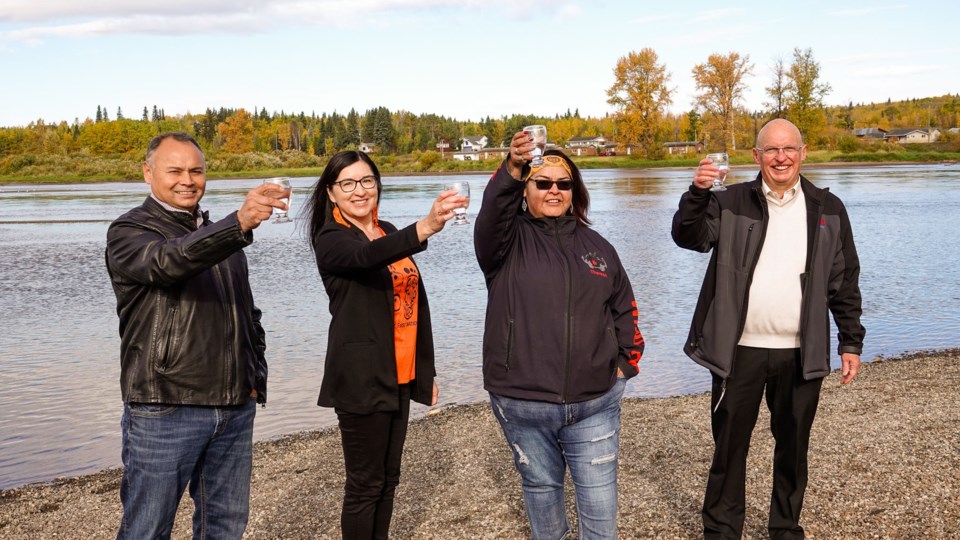The Regional District of Bulkley-Nechako and three area First Nations have signed an agreement committing them to work together to improve the health of the Nechako River and its tributaries.
The memorandum of understanding between the RDBN and Saik’uz, Stellat’en and Nadleh Whut’en First Nations was signed Wednesday.
“Local First Nations and non-Indigenous communities alike have suffered from the impacts of the Nechako water management regime, which has prioritized energy production over a healthy river and fish populations," RDBN board chair and Vanderhoof mayor Gerry Thiessen said in a statement.
"The people of our region - those who use and depend on the river - deserve a healthy Nechako and a legitimate seat at the table when it comes to water management. We can achieve that goal by continuing to work together collaboratively.”
The MOU puts a focus on sturgeon and salmon populations and calls for more natural flows in the Nechako River, new stewardship projects and a new governance regime to replace the one established in 1987, which excluded the four groups.
The step was taken as a long-running lawsuit against Rio Tinto and the provincial and federal governments remains before the court.
The case centres on the impacts of the construction and operation of the Kenney Dam on the Nechako River. Completed in 1952, it created the massive Nechako Reservoir which provides hydro power to Rio Tinto's aluminum smelter in Kitimat in northwest B.C.
The communities say about 70 per cent of the water that would normally flow into the Nechako River is diverted as a result of the project, causing "devastating effects" on the river's fish species - chinook salmon, sockeye salmon and Nechako white sturgeon.
In part, they are seeking an injunction that would require the RioTinto to "reinstate the functional flows that make up the natural flow of the Nechako River."
In a response to a request for comment on the signing, a Rio Tinto spokesperson said improving the river's health is a priority for the company and is looking forward to bringing all parties together as it has through its water engagement initiative.


